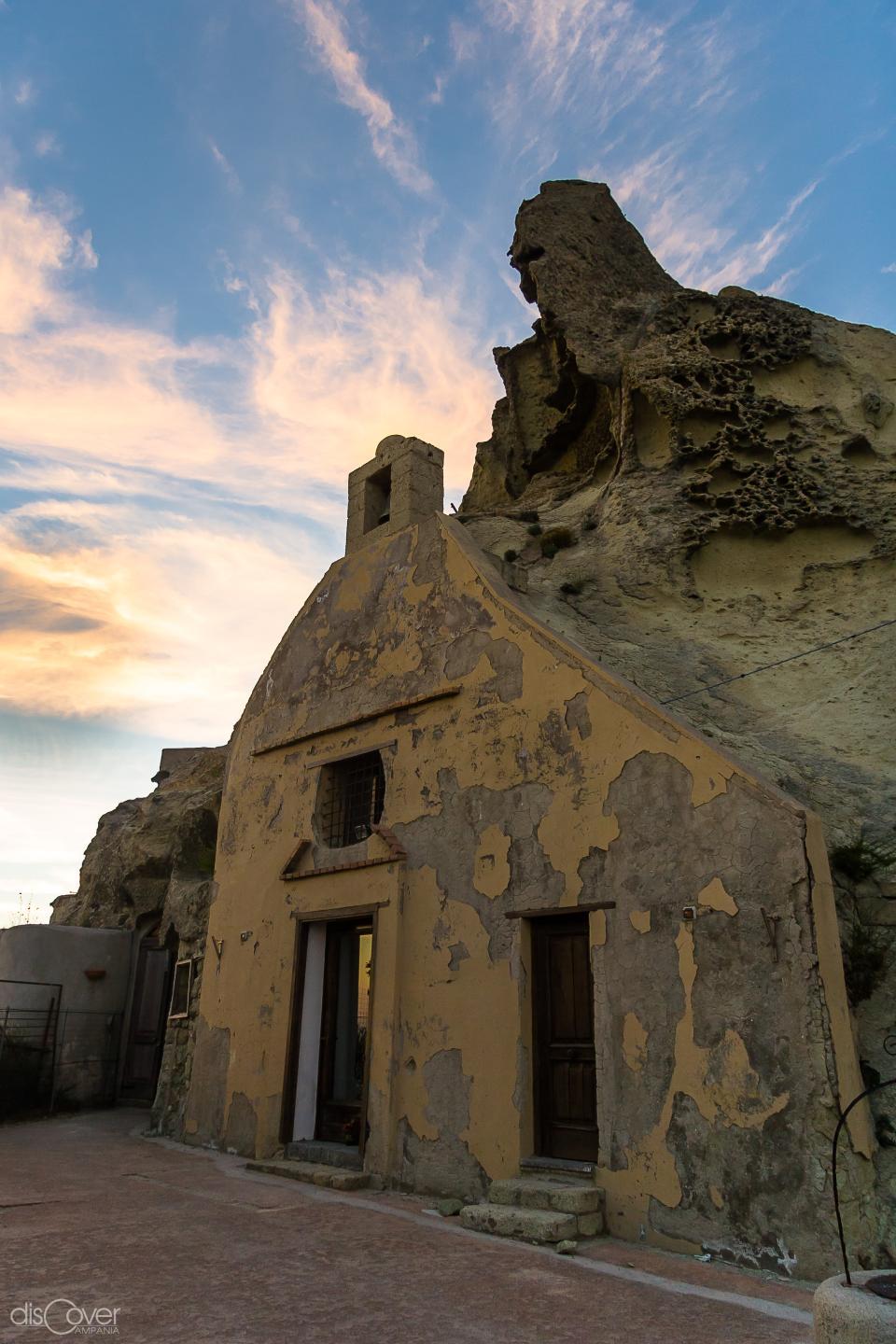A geographical indication that cannot be found on topographic maps, starting with the oldest one by Mario Cartaro in 1588 which, instead, made the name Epomeo official, from the Greek "I look around". The monument has always been the destination of a unique experience which, being in Ischia, cannot be denied at least once in a lifetime. Just like foreign travelers did who, since the 1600s, climbed the paths that open on every side of the large rock cone on the back of a mule.
Epomeo is not a mountain, it is not a volcano, but both. Its conformation is so particular that it was necessary to coin the definition of volcano-tectonic horst. A gigantic resurgent plate of tuff that remained for thousands of years in a caldera in the centre of the island, in contact with boiling mineral waters, which gave them their characteristic green colour, before an intrusion of magma from the depths of the earth raised them towards the high, starting a new transformation of the island. This is how the Epomeo massif was born and grew. According to the myth, the head of the restless giant Tifeo.

 On the ascent to the summit you come across dense chestnut woods, which offered the inhabitants of the villages of the 3rd century BC what was necessary for the cultivation of vines. The mountain was also frequented by the oldest inhabitants of the island, who from there could spot any vessel sailing the sea. If necessary, fires were lit to raise the alarm of imminent danger, giving the islanders the opportunity to abandon the coastal villages, to take refuge in the numerous caves and stone houses in the boulders present in the most inaccessible and protected points of the mountain.
On the ascent to the summit you come across dense chestnut woods, which offered the inhabitants of the villages of the 3rd century BC what was necessary for the cultivation of vines. The mountain was also frequented by the oldest inhabitants of the island, who from there could spot any vessel sailing the sea. If necessary, fires were lit to raise the alarm of imminent danger, giving the islanders the opportunity to abandon the coastal villages, to take refuge in the numerous caves and stone houses in the boulders present in the most inaccessible and protected points of the mountain.
Documented since 1459, the small church dedicated to San Nicola is dug into the tuff of the ridge and is one of the oldest examples of rock architecture in Southern Italy, embellished with a marble bas-relief of the Saint from the early 16th century. Next to the church, in the small monastic cells created in stone, recently set up as a small museum, a story of contemplation is told, written by men who retreated there in solitude and prayer. Like Giuseppe d'Argouth, governor of the Castle of Ischia under Charles of Bourbon who decided to become a Franciscan and retire to the hermitage. D'Argouth, like the hermits who followed, welcomed foreigners who never neglected the climb to Epomeo during their stays on the island, among the stages of the classic Grand tour in Italy.
Then as today, the excursion on the mountain offers an unforgettable spectacle at dawn between night and day, sky and earth, moon and sun. And all around the island, in the sea, you can distinguish the Pontine islands, Procida and Capri, and the continental coast, up to the Apennine mountains.





